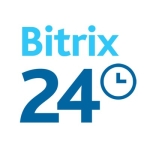What is our primary use case?
From that collaborative view, I'm a big user of Teams, mainly because of business. I use Teams a lot for meetings and collaboration, both internally and externally. I think it works pretty well.
How has it helped my organization?
I have integrated it with my Jira infrastructure, so I'm able to make phone calls directly from my Teams application to literally the entire globe.
have a third-party call center vendor that I've already integrated with Teams, so I can switch between different profiles. So at the moment, I'm okay. I haven't run into anything that I would need to change.
What is most valuable?
For Teams, it's purely because of collaboration. Nothing more, nothing less. It's a good tool for communication. All my meetings, most of my presentations... I like the whiteboard feature as well. I'm able to scribble some stuff if I need to explain a couple of items.
Teams has been a pretty cool tool for me and my organization, and for making communication easier.
The chat functionality is pretty decent. I have history; I can always scroll back and see if I need to, and the search functionality makes it easy for me to navigate across Teams platform.
If I have to share any document, I can easily find it there. Also, creating specific groups for specific people so that we can communicate easily about data and information is pretty decent as well.
What needs improvement?
I would like the initial setup process to be more user-friendly.
For how long have I used the solution?
I have been using it for five years now. We have E3 suite.
What do I think about the stability of the solution?
I would rate the stability a five out of ten. We had some upstream outages which impacted collaboration.
The only issue is that it's not local; it's not in-country. Whenever there are upstream issues, we get impacted.
What do I think about the scalability of the solution?
I would rate the scalability a ten out of ten. It's awesome and can integrate with a couple of things as well, which is brilliant.
In my local region, we have about 500 end users in total. My organization is much smaller. I have a customer with almost a thousand users, and it works brilliantly. I attended an online meeting with the organization, and it went perfectly.
The only disruption was due to local internet capacity, but from Teams functionality standpoint, it worked brilliantly. We were able to have a town hall across eight countries, which worked brilliantly.
Which solution did I use previously and why did I switch?
We had Skype before. I think it was more business-driven.
The business decided to migrate. We had on-premises Exchange and cloud, and we adopted the features in Microsoft 365.
How was the initial setup?
I would rate my experience with the initial setup an eight out of ten, with ten being easy. Microsoft can make it even more user-friendly in the future.
Maintenance requires zero effort. The only reason I would look at Qualys and, eventually, Orca is for deep security. I wanted to look at it from either Orca integration or a Microsoft Sentinel integration to get a view of the tenant and its security posture.
What about the implementation team?
I didn't deploy it. I had a third party do it on my behalf.
What's my experience with pricing, setup cost, and licensing?
I would rate the pricing as a ten out of ten, where one is cheap, and ten is very expensive. They need to work on their pricing. I hear they want to decouple Teams from some of the packages, but I don't know how true that is.
But I would like the prices to be lower.
What other advice do I have?
Overall, I would rate it a ten out of ten; it's awesome. It's a good platform.
I would recommend it to others. Go for it, if it meets your specific use case. Look at the size of the organization, look at the value of what you are working on. If you want standardized resources globally, then I think this is the way to go, and Microsoft is the way to go.
Which deployment model are you using for this solution?
Public Cloud
If public cloud, private cloud, or hybrid cloud, which cloud provider do you use?
Microsoft Azure
Disclosure: My company does not have a business relationship with this vendor other than being a customer.
























